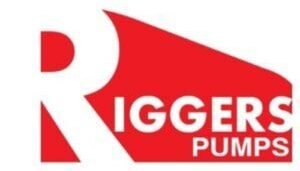What is High-Pressure Water Sand Blasting?
High-pressure water sand blasting, also known as wet sandblasting or water sandblasting, is a process that combines high-pressure water with abrasive materials (such as sand, silica, or other grit media) to clean, smooth, or remove contaminants from surfaces. This technique is widely used in industrial applications to remove rust, paint, corrosion, grease, coatings, or other unwanted materials from various surfaces, such as metal, concrete, and stone.
Unlike traditional dry sandblasting, where compressed air is used to propel abrasive particles onto a surface, wet sandblasting uses high-pressure water to mix with the abrasive particles. This combination provides several benefits, including reduced dust and heat generation.
How High-Pressure Water Sand Blasting Works
The process of high-pressure water sand blasting involves the following steps:
- High-Pressure Water Pump: A high-pressure pump generates water at extremely high pressures (typically ranging from 2000 psi to 5000 psi or more).
- Mixing Abrasive Media: The abrasive material (such as sand, glass beads, silica, or grit) is fed into the water stream via a suction or gravity feed system. The water and abrasive mix to form a high-pressure slurry.
- High-Pressure Nozzle: The mixture of water and abrasive media is expelled through a specialized nozzle designed to direct the slurry onto the surface being treated. The high-pressure water accelerates the abrasive particles, giving them enough force to strip away the contaminants.
- Impact on Surface: As the high-pressure slurry impacts the surface, the abrasive particles remove rust, paint, corrosion, and other unwanted materials. The water acts as a lubricant and dust suppressant, minimizing the heat generated by friction and the amount of dust produced.
Applications of High-Pressure Water Sand Blasting
High-pressure water sand blasting is widely used in various industries for cleaning, surface preparation, and finishing. Some common applications include:
- Rust Removal: Removing rust and corrosion from metal surfaces, such as pipes, tanks, or structural steel, to prepare them for repainting or recoating.
- Paint Removal: Stripping old or deteriorated paint from metal, concrete, or wood surfaces in preparation for refinishing.
- Surface Cleaning: Cleaning and removing oil, grease, dirt, and other contaminants from industrial equipment, machinery, and components.
- Graffiti Removal: Removing graffiti from buildings, walls, and other surfaces without causing significant damage to the underlying structure.
- Concrete and Stone Surface Preparation: Preparing concrete or stone surfaces for coatings or sealants by cleaning away surface debris, old coatings, or grime.
- Ship Hull Cleaning: Removing marine growth, rust, and old coatings from ship hulls, decks, and other marine structures.
- Automotive and Aerospace Maintenance: Cleaning and preparing metal parts for painting or refurbishing in the automotive and aerospace industries.
Advantages of High-Pressure Water Sand Blasting
- Dust Suppression
- One of the biggest advantages of wet sandblasting over traditional dry sandblasting is the reduction of airborne dust. The water in the system captures the dust created during the blasting process, making it safer for operators and reducing environmental contamination.
- Minimal Surface Damage
- The water in the mixture helps to reduce the abrasiveness of the media, preventing over-blasting or damage to delicate surfaces. This is especially important when working on materials like wood, stone, or soft metals that can be easily damaged by dry sandblasting.
- Effective Cooling
- The water acts as a coolant, reducing the friction and heat buildup that can occur during dry sandblasting. This is particularly important when working with metals, as excessive heat can cause warping or distortion.
- Versatile Media Options
- Various abrasive materials can be used in water sandblasting, including sand, silica, garnet, glass beads, or plastic media, depending on the surface being cleaned and the level of abrasiveness required. This makes the process versatile for a wide range of applications.
- Efficient Cleaning Power
- The combination of high-pressure water and abrasive media makes this process highly effective at removing tough materials like heavy rust, industrial coatings, or scale from surfaces, leaving them clean and ready for further treatment.
- Environmentally Friendly
- Wet sandblasting is more environmentally friendly compared to dry sandblasting because it reduces dust and airborne pollutants. Additionally, the use of biodegradable or inert media (such as garnet or glass beads) further reduces environmental impact.
- Time and Cost-Efficient
- High-pressure water sandblasting can be faster and more efficient than traditional cleaning methods, reducing the time required to prepare surfaces. This helps reduce labor costs and downtime in industrial applications.
Disadvantages of High-Pressure Water Sand Blasting
- Water Disposal
- The water used during the sandblasting process must be properly collected and disposed of, particularly if it contains contaminants like paint, rust, or chemicals. Wastewater management can add complexity to the process.
- Surface Drying
- After wet sandblasting, the surface needs to be properly dried before any further coatings or treatments can be applied. This can increase the time required for the overall project.
- Limited for Certain Applications
- Wet sandblasting may not be suitable for applications where water exposure is undesirable or where the surface needs to remain completely dry (e.g., electronics or sensitive equipment).
Conclusion
High-pressure water sandblasting is a highly effective method for cleaning, surface preparation, and paint or rust removal across various industries. It offers key advantages over traditional dry sandblasting, such as dust suppression, better cooling, and minimal surface damage, making it an ideal choice for sensitive materials and environments. Despite some challenges related to water disposal and drying, its overall benefits in terms of efficiency, safety, and versatility make it a valuable tool for industrial cleaning and surface preparation.

